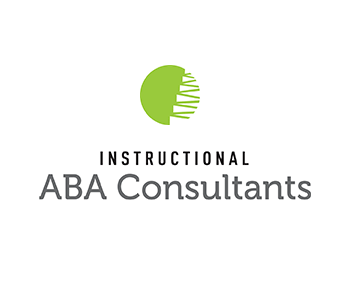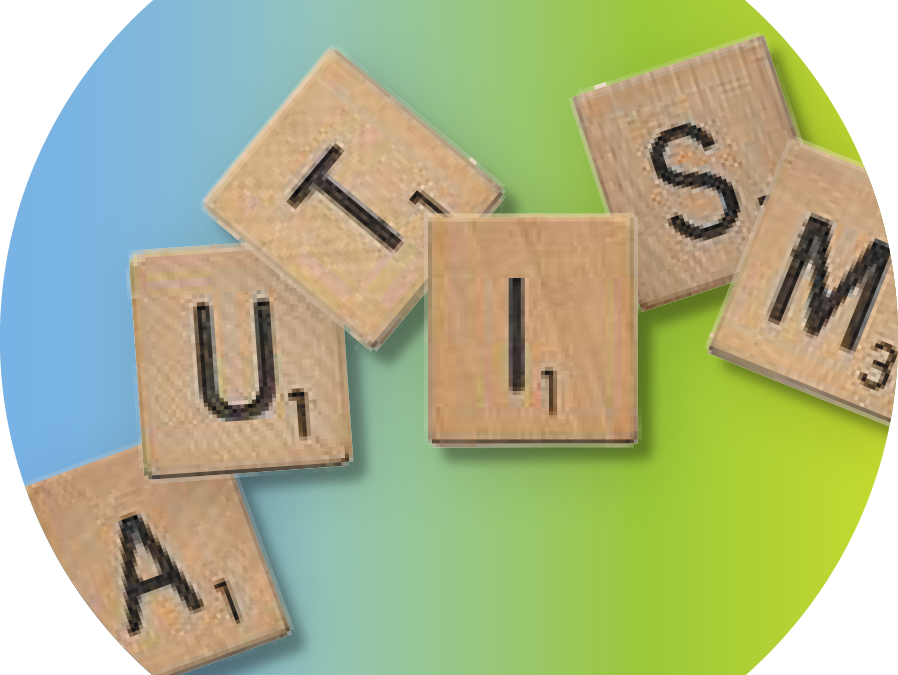
by IABA Team | Oct 31, 2022
Autism has traditionally been diagnosed more frequently in males, but new studies have shown that autism may have nothing to do with sex. The lower prevalence of autism in girls may be due to specific behaviors that indicate autism going unnoticed.
The signs and symptoms of autism do not differ between boys & girls. The way some signs and symptoms of autism can be shown through behaviors, however, can differ.
General Signs of Autism
Before looking at how behaviors that potentially indicate autism may differ between boys and girls, let’s look at some of the general signs of ASD. Signs of general autism normally include:
- Social behavior issues
- Communication issues
- Problems understanding relationships
- A very narrow set of interests and areas of focus
- Stimming (repetitive motor actions and/or sounds)
- Difficulty adapting to change
- Extreme reactions to sensory stimuli
Signs of Autism in Boys
The reason autism diagnoses have been observed at higher levels in boys is that the behaviors most people associate with autism frequently appear in young boys. These signs include:
- Repetitive Actions & Play. Boys with autism are more likely than girls to engage in extremely limited and repetitive actions & play.
- Narrow Fields of Interest. Fields of interest including mechanical or data-driven topics often appeal much more to boys with autism than girls.
- Aggression. Aggression related to autism manifests much more often in boys than in girls.
- Social Unawareness. Boys with autism seem more socially ‘awkward’ than girls with ASD. Younger boys with autism often seem socially withdrawn and uninterested, unlike a larger number of young girls with autism.
Please note that signs of autism can differ greatly from person to person. Some of the signs listed in both of these lists can surface in both boys and girls. These lists are simply to show signs that occur more often when diagnosing autism in young girls & boys.
Signs of Autism in Girls
Some of the criteria used to diagnose autism may go unnoticed by parents or teachers when it comes to girls. These signs can manifest in different ways. Some of the signs of autism that girls exhibit more than boys include:
- Introversion. Girls with autism may be more introverted or be considered to be ‘shy’ than boys. While being introverted doesn’t necessarily mean a girl has autism, being severely introverted may be a warning sign.
- Hyper focusing. Hyper focusing is, broadly speaking, complete absorption into a task. In girls with autism, hyperfocus totally prevents them from dividing attention between more than one thing.
- Lack of social awareness. Another sign that a young girl may have autism is a lack of social awareness. This manifests itself in a girl being unable to establish the relevance or importance of others, leading to a lack of understanding social cues.
- Auditory/Sensory Processing. Severe auditory and other sensory processing sensitivities or issues may also be a sign of autism. This is different than being scared of alarmed due to loud or explosive sounds and more about issues with sounds or sensory stimuli most people take no issue with.
- Social Camouflaging. Social camouflaging can be the most difficult sign of autism in young girls for parents to detect. Young girls with mild autism may go undiagnosed due to seeming socially neurotypical. This makes looking for other signs even more important.
ABA Therapy from IABA Consultants
If you have questions regarding autism treatment, education, or plans to use ABA therapy, we are here for you! Our goal is to make sure no family is turned away due to financial constraints. Our therapy team would love to talk to you. Find the location closest to you and give us a call. We’re here for you.

by IABA Team | Oct 24, 2022
Autism has traditionally been diagnosed more frequently in males, but new studies have shown that autism may have nothing to do with sex. The lower prevalence of autism in girls may be due to specific behaviors that indicate autism going unnoticed.
Let’s take a look at why autism in girls is often overlooked and what those signs are.
Girls & Autism
Why have many signs of autism in girls been overlooked for so long? The short answer is behavioral patterns. While the criteria used to diagnose autism are not different for boys and girls, the way the signs appear may be different.
Signs of general autism normally include:
- Social behavior issues
- Communication issues
- Problems understanding relationships
- A very narrow set of interests and areas of focus
- Stimming (repetitive motor actions and/or sounds)
- Difficulty adapting to change
- Extreme reactions to sensory stimuli
This list is very general and non-specific, but they are related to the criteria used to diagnose autism. The behaviors that show some of these issues, however, can be different for boys & girls.
Signs of Autism in Girls
Some of the criteria used to diagnose autism may go unnoticed by parents or teachers when it comes to girls. These signs can manifest in different ways. Some of the signs of autism that girls exhibit more than boys include:
- Introversion. Girls with autism may be more introverted or be considered to be ‘shy’ than boys. While being introverted doesn’t necessarily mean a girl has autism, being severely introverted may be a warning sign.
- Hyper focusing. Hyper focusing is, broadly speaking, complete absorption into a task. In girls with autism, hyperfocus totally prevents them from dividing attention between more than one thing.
- Lack of social awareness. Another sign that a young girl may have autism is a lack of social awareness. This manifests itself in a girl being unable to establish the relevance or importance of others, leading to a lack of understanding social cues.
- Auditory/Sensory Processing. Severe auditory and other sensory processing sensitivities or issues may also be a sign of autism. This is different than being scared of alarmed due to loud or explosive sounds and more about issues with sounds or sensory stimuli most people take no issue with.
- Social Camouflaging. Social camouflaging can be the most difficult sign of autism in young girls for parents to detect. Young girls with mild autism may go undiagnosed due to seeming socially neurotypical. This makes looking for other signs even more important.
What To Do
If you notice any regular occurrences of irregular behavior, you may want to check in with your child’s pediatrician. A single behavioral issue is usually not enough to seek a medical opinion, but frequent irregular episodes could indicate an evaluation.
Seeking professional medical help is the only way to truly get a proper diagnosis.
ABA Therapy from IABA Consultants
If you have questions regarding autism treatment, education, or plans to use ABA therapy, we are here for you! Our goal is to make sure no family is turned away due to financial constraints. Our therapy team would love to talk to you. Find the location closest to you and give us a call. We’re here for you.

by IABA Team | Jul 12, 2022
Acetaminophen has always been the go-to drug for pain relief during pregnancy. Doctors often prescribed acetaminophen as an OTC drug for mild to moderate headaches due to the low risk associated with pregnancies. The widespread use of acetaminophen for pregnant women in pain, however, may be coming to an end.
Recent research conducted by both university researchers and the US National Institutes of Health links excessive acetaminophen use to autism and ADHD. While the conclusions of the initial studies need additional research for a definitive conclusion, the studies had eye-opening results.
Studying the Effects of Acetaminophen on Pregnancy Risks
A National Institutes of Health-funded study conducted by doctors from Johns Hopkins University called the Boston Birth Cohort Study was used for acetaminophen research. Part of the study examined 24,000 participants, 996 of whom were tested for acetaminophen levels and associated byproducts at birth.
The results of the study on acetaminophen were stunning. Children in the study were checked in on 8.9 years after birth. Of the 996 births, 25.8% had been diagnosed with ADHD, 6.6% had been diagnosed with autism, and 4.2% had been diagnosed with both. This correlates to 2.9X the risk for ADHD and 3.6X the risk of autism (compared to the lowest third of diagnoses in participants).
Researchers in the study noted the results supported earlier research linking acetaminophen to increased autism & ADHD risk during pregnancy. They also noted that future studies will be needed for a definitive conclusion. Some factors not used during the test (health of the mothers, preexisting conditions of the mothers, etc) may also need to be factored in for future research.
Is it Safe to Take Acetaminophen During Pregnancy?
This is definitely a question best left to your doctor. While the answer may be somewhere along the lines of ‘use very sparingly,’ some unanswered questions make this difficult to answer. Researchers and doctors are questioning and studying the impact of acetaminophen and other drugs taken early during pregnancy versus late in pregnancy.
Without conclusive research, there is no ‘recommended dose’ for doctors to prescribe. Talking to your doctor is the only way to get a good answer to this question. Your doctor knows you and your needs better than general internet information ever will. If you are experiencing pregnancy-related pain, please talk to your doctor before taking any OTC medications!
ABA Therapy from IABA Consultants
If you have questions regarding autism treatment, education, or plans to use ABA therapy, we are here for you! Our goal is to make sure no family is turned away due to financial constraints. Our therapy team would love to talk to you. Find the location closest to you and give us a call. We’re here for you.

by IABA Team | Jan 25, 2022
Note: This short article was primarily put together for reference. The actual process for diagnosing ASD is much more complex than just the steps and areas of note published in the DSM-5. Only medically-licensed professionals are able to properly diagnose ASD and any co-occurring conditions. This article is meant for reference use only and is not intended to provide medical advice.
Getting a proper autism (ASD) assessment or diagnosis may seem complicated, but in reality, only a few specialists need to be contacted in order to set up an evaluation. Autism diagnoses can only be given by a select group of medically-licensed professionals. The professions that can give an autism diagnosis include:
- Developmental Pediatricians
- Pediatric Neurologists
- Child Psychiatrists
- Child Psychologists
The American Psychiatric Association Diagnostic and Statistical Manual of Mental Disorders (DSM-5) includes guidelines professionals use to look for signs of ASD.
What is Observed for an Autism Diagnosis
The DSM-5 specifies five areas that need to be evaluated for an ASD diagnosis.
Persistent Deficits in Social Communication and Social Interaction Across Multiple Contexts
The first area observed by doctors looking at a potential ASD diagnosis focuses on social issues. Please note that this is a list for reference–only medically licensed professionals can make a proper diagnosis for ASD. There are a few specific things that need to be carefully observed:
- Deficits in social-emotional reciprocity.
- Abnormal social approaches
- Failure to have a reciprocal conversation
- Lack of sharing interests
- Lack of emotions
- Failure to respond to social queues and interactions
- Deficits in nonverbal communicative behaviors.
- Poor communication (nonverbal and nonverbal in tandem with verbal)
- Lack of eye contact
- Abnormal body language
- Lack of facial expressions
- Unable to interpret gestures
- Deficits in developing, maintaining, and understanding relationships.
- Difficulty adjusting to varying social situations
- Difficulty with play or making friends
- Lack of interest in peers
Restricted, Repetitive Patterns of Behavior, Interests, or Activities
Doctors look for specific patterns or combinations of behaviors, interests, and activities to help guide an autism evaluation.
- Repetitive motor skills, movements, speech, or use of objects.
- Repeated gestures or motions
- Specific, repetitive organization
- Repeated idiosyncrasies
- Insistence on sameness.
- Inflexible to routine changes
- Ritualized patterns
- Rigid thinking or action patterns
- Highly restricted or fixated interests.
- Strong attachments or preoccupations with unusual objects
- Excessive use or focus on a specific object
- Hyperactivity to sensory input.
- Indifference to pain or extreme temperatures
- Adverse reactions to specific sensory stimuli
- Excessive fascination with sensory stimuli
ASD Symptoms Over Time
ASD symptoms must be present in early development but may not manifest fully until social demands exceed limited capacities or are masked by learned strategies later in life. The DSM-5 notes that some symptoms of ASD can only become apparent later in life, as an individual is forced to interact with more of the world. These symptoms alone may not be enough for an ASD diagnosis if no symptoms were present in an individual as a child.
Significant Social Impairments
Records of ASD symptoms causing clinically significant impairment in social, occupational, or other areas of functioning. Medical professionals performing ASD diagnoses will look at social interactions and any impairments. Accepted social queues, communication, and other social stimuli will be used to evaluate.
No Evidence of Intellectual Disability
ASD evaluations must have evidence to rule out other diagnoses of intellectual disabilities. Although ASD frequently occurs alongside other intellectual disabilities, the diagnoses must be made separately. Social factors such as communication are commonly used to differentiate ASD from intellectual disabilities but are not always the case.
Use of Autism Diagnosis Criteria Reference
This short article was primarily put together for reference. The actual process for diagnosing ASD is much more complex than just the steps and areas of note published in the DSM-5. Only medically-licensed professionals are able to properly diagnose ASD and any co-occurring conditions.
The guidelines in the DSM-5 are also useful as a quick reference for things to notice in a young child’s development. Again, only medically-licensed professionals can diagnose ASD, but parents must take note of any developmental abnormalities as a child ages.
ABA Therapy from IABA Consultants
If you have questions regarding autism treatment, education, or plans using ABA therapy, we are here for you! Our goal is to make sure no family is turned away due to financial constraints. Our therapy team would love to talk to you. Find the location closest to you and give us a call. We’re here for you.

by Jessie Cooper | Oct 14, 2021
Over the course of the past year, I’ve been writing to you about standing in your own worth, your truth. I’ve taken you down many paths in the forest of life and shared both challenging and joyful paths that I have walked down. Through writing to you about personal experiences I have healed and still seek to heal further. Life is full of encounters and experiences that can deliver this; for us to hold each moment of being human in our hearts to live a life of freedom.
What I haven’t written to you about in detail is my career and the work that started my journey. This past week I was recertified by Board Certification as a Behavior Analyst for a fourth time marking a decade as a BCBA. This summer I will celebrate a decade as a BCBA entrepreneur as the owner of Instructional ABA Consultants. It was emotions and injustice that brought me to my career and success. This week I’d like to share my professional journey.
Starting a Career Helping with ASD
My work in the field of autism began fifteen years ago when I was obtaining my bachelor’s degree at the Ohio State University (OSU) in human development focusing on early childhood. I was curious about how environments shaped the developmental outcomes of children. During my time at OSU, I worked in their preschool program and was a home-based therapist for two children with autism using applied behavior analysis (ABA).
This was back in the early 2000s and in both cases, the children were accessing services but their ASD symptoms were not being treated. The ABA program I was working under was state-funded and both children I worked with had high levels of physical aggression. Neither child had a treatment plan that actually alleviated the aggression. I was passionate about the kids and knew from my undergraduate work that environments mattered. In the fall of 2009, I began my master’s degree in Applied Behavior Analysis at The Chicago School of Professional Psychology.
My choice to begin a master’s degree stemmed from a desire to understand why aggression, as well as other aberrant behaviors, occurred in children. I also wanted to understand how applied behavior analysis treated autism symptoms in early childhood. During my master’s degree, I worked as an early childhood line therapist and joined the Illinois Crisis Prevention Network (ICPN) as my internship. I had to work during my degrees to pay my bills and at the time was focused on nothing outside of my career. I was thirsty to learn so I could create change for children.
Working at the ICPN
As I began working on the ICPN I was introduced to adults with mental illness and developmental disabilities. I quickly fell in love with the population and saw how lack of access to quality treatment affected their lives. In spending the first five years of my career focused on children I had never really thought about where they would go when they grew up. I had never thought about the adults with disabilities who had never gained access to care as children themselves. Most of the adults I served at the time had been raised in state-run institutions. Through my work with the adults, my eyes were opened to not only what happens immediately with small children with autism who do not have access to care, but also what can happen in adulthood.
During my time at the ICPN, I worked to gain my associate certification first and followed it up with BCBA board certification. I was given the opportunity of a caseload of clients (from children to geriatrics) who needed immediate crisis support; first under supervision, then as my own caseload. During this time I was wildly in love with my job but fiercely angry at the lack of care my clients received.
As a young woman, I cannot tell you the number of parents’ hands I held as we talked about their child’s (young or adult) experience that led to a crisis. The stories they told me both broke my heart and filled me with a fire to change their experience. Time after time the constant theme that led to a crisis was lack of intervention due to either a lack of funding or an unethical & uncaring therapy team. I worked with each client and family to stabilize their loved ones from crisis to community-functioning. Without access to outside care of the crisis team, success was usually not sustainable.
Changing the Game
In 2012 I decided to change that. I had met my own personal mission to understand aberrant behaviors and the impact of the environment on childhood development. Now, I know through science that the environment is the key predictor of outcome. I also knew that applied behavior analysis provided a scientific approach to at-risk symptoms of autism as well as behaviors.
With my own hands, through applied behavior analysis, I was able to change the outcome of lives for the better. I wanted to open a private practice that used these skills to close the gap in services based on funding sources. I also wanted to challenge my field ethically to create a place where all of our clients received quality care. A decade ago this was not the case. Even today ABA has mountains to climb regarding regulating quality care for all families.
It’s been a decade since I sat for my boards and I still have a fire burning in me fueled by what our science can do to help serve clients who otherwise would not have access to therapy. I went from just me to five locations, across three states, with a team of professionals who have the same passion. Each day I wake up knowing that we (not just me) are creating lasting change. Learning to run a company is for a different blog but as a BCBA I know I have a decade to be proud of.
To the next decade of service. Wherever we may go.
Xoxo,
Jessie






